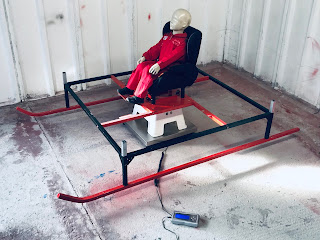Tuesday, November 30, 2021
A Bridge Too Far?
Thursday, November 25, 2021
Known Unknowns
A 'known unknown' connected with design and build of large drones ~ I'm informed by those who do it for a living ~ is whether or not the airframe is suitably rigid. Without this the danger is that torsional effects or those of resonance might mean the flight controller (Pixhawk, orange) cannot be tuned for stable operation. Resonance has long been a bugbear in development of rotorcraft, however, as has flutter in fixed-wings. In the long-term though there is usually no reason why each cannot be ironed out.
For the choice is to what extent people-carrying drones are designed to use what are effectively analogue control means like weight-shift for steering, or digital. Helicopters for instance are fixed in the hover by the pilot, whereas drones do so using a GPS fix. My preference at the outset however is to err on the digital side because for one thing it is going to continuously improve, and for another it is the way the world is headed.
I've just read Test Gods, the story of the development of the Virgin Galactic spaceship that is to all extents an aeroplane that isn't air-breathing. The author points out that it was effectively designed as such by Burt Rutan, whose specialism has been innovative types of aeroplane. Nonetheless the same author points out that in the race for space it is likely to be bested by both the SpaceX and Blue Origin rockets needing no human intervention and which both launch vertically and (remarkably) land vertically utilising computing power alone to do so, and all in place of pilots.
So do we have much of a choice, especially in view of the fact that the prototype at sub-scale has to be flown by remote means?
Not really.






